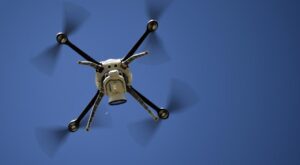
Pentagon acquisition chief Ellen Lord highlighted the Defense Innovation Unit's (DIU) Blue sUAS (small unmanned aerial systems) project as a stepping stone toward a stronger U.S. drone industrial base, which she said is needed to counter China's dominance in the sUAS market. "We know that the volume of Chinese small UAS exports will continue to increase unless there's a shift in Chinese dominance in the market share," Lord said in a Heritage Foundation virtual event on Sept. 10. "Furthermore, we…














